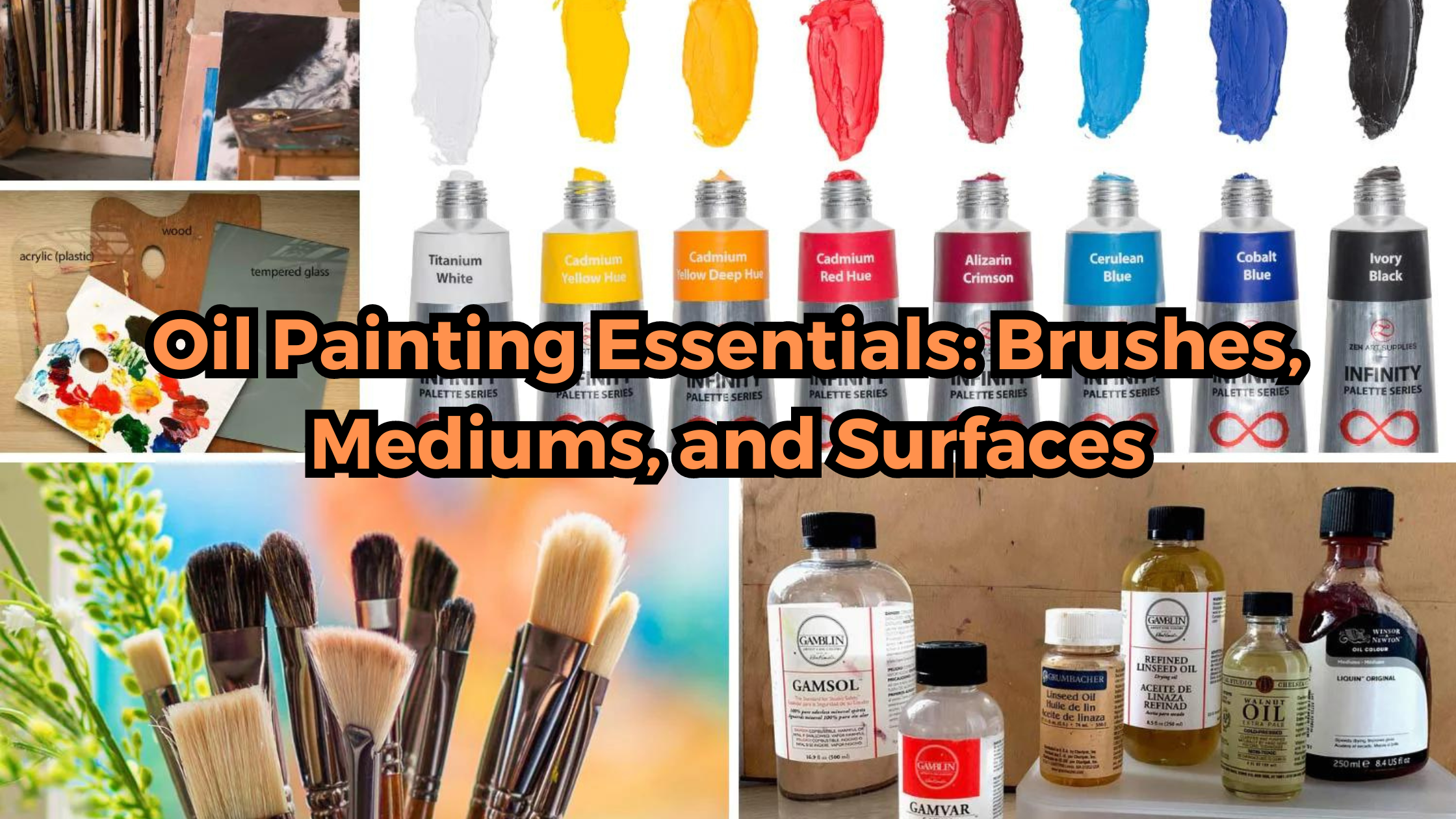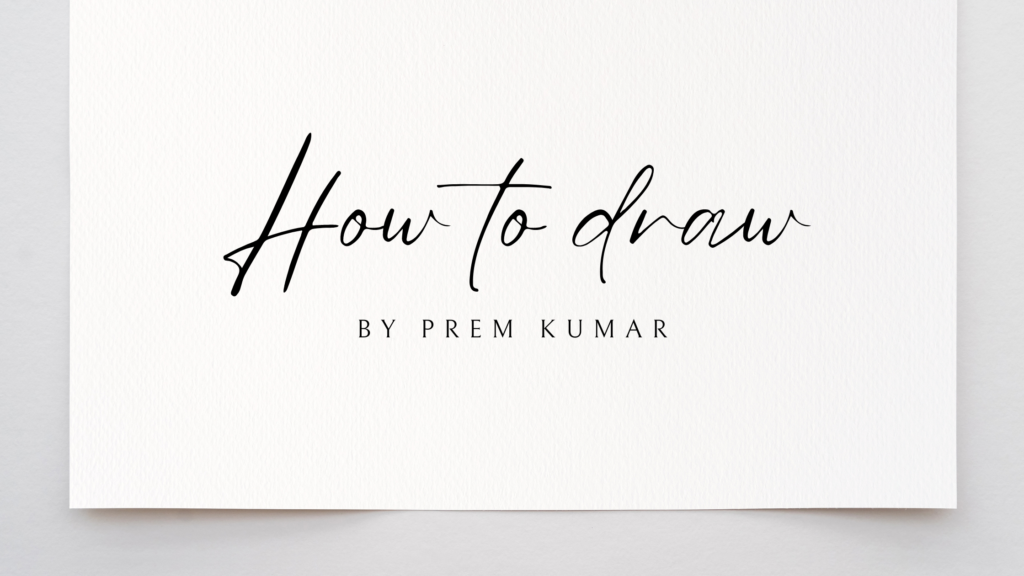Beginning an Oil Painting journey is an exciting adventure full of limitless possibilities. As an artist with a decade of experience, I realise the value of learning the fundamentals in order to advance your craft. In this article, we’ll look at the three main elements that influence your oil painting experience: brushes, media, and surfaces. These fundamental factors can have a huge impact on the outcome of your work, and if you understand them well, you can unlock a world of creative possibilities.
Oil Painting Brushes: Extending Your Imagination
A painter’s brush is more than just a tool; it is a conduit for their emotions and an extension of their imagination. The appropriate brushes may make a big impact on the texture, precision, and overall look of your artwork. Here are a few brushes that every oil painter should have in their arsenal:
Flat Oil Painting Brushes:
Flat brushes are ideal for covering big areas and making crisp, straight lines. They are adaptable and can be used for wide strokes as well as precise details.
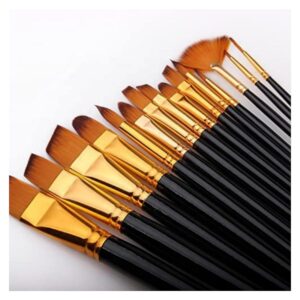
Round Oil Painting Brushes:
Round brushes are ideal for fine details because they provide accuracy and control. They are absolutely necessary for drawing delicate lines, curves, and elaborate patterns.
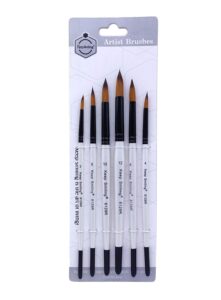
Fan Oil Painting Brushes:
Fan brushes are essential for producing texture and blending in landscapes and portraiture. They’re great for creating the smooth, feathery qualities observed in clouds or hair.
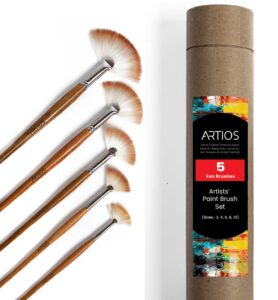
Filbert Oil Painting brushes:
Filbert brushes have a rounded tip with a flat edge, combining the qualities of flat and round brushes. They are excellent for blending and generating soft edges, which makes them indispensable for creating realistic textures.
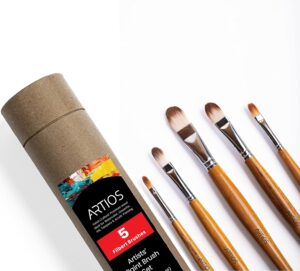
Experimenting with different brush sizes and shapes will assist you in determining your particular preferences and style. High-quality brushes are essential; they may be more expensive, but their endurance and performance make them a great investment for any serious artist.
Oil Painting Mediums: Expanding Your Palette
Oil painting mediums are essential for modifying the consistency and drying time of your paint. They expand the texture, transparency, and luminosity possibilities in your artwork. Consider the following important oil painting mediums:
Linseed Oil:
Derived from flax seeds, this traditional medium is extensively used to improve the flow and transparency of oil paint. It also has a faster drying period, which makes it popular among painters.
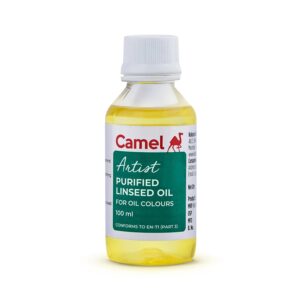
Turpentine or Odourless Mineral Spirits:
These solvents are used to thin paint, clean brushes, and make the paint more fluid. Consider odour and toxicity when selecting a solvent, opting for odourless mineral spirits if you are sensitive to fumes.
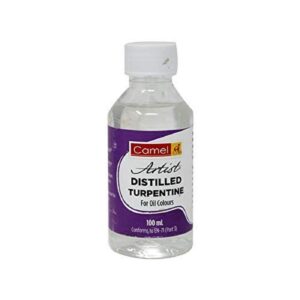
Galkyd:
Galkyd is an excellent alternative for accelerating the drying period of oil paints. It’s popular among artists who prefer a faster layering technique.
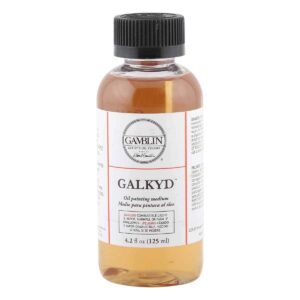
Stand Oil:
Stand oil is a great medium for creating a thicker, more glossy finish. It improves the flow of paint, boosts transparency, and gives your colours depth.
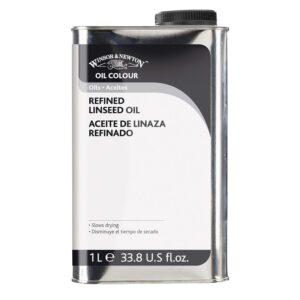
Experimenting with different materials helps you to personalise your painting approach. Keep in mind that excessive usage of materials can affect the archival integrity of your artwork.
Oil Painting Surfaces: The Canvas as Your Playground
Choosing the best surface for an oil painting is like picking the best staging for a performance. The surface affects not just the texture of your work, but also how the paint adheres and interacts with light. Here are some common oil painting surfaces:
Stretched Canvas:
A traditional option stretched canvas offers a robust and adaptable surface. It is available in a variety of sizes and pre-primed or unprimed alternatives, allowing you to tailor your canvas to your specific requirements.
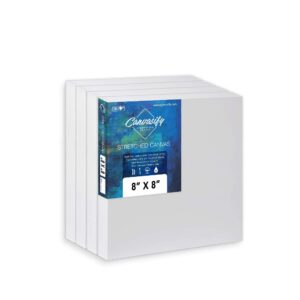
Canvas Panels:
These are sturdy boards coated in canvas that are ideal for painters who prefer a stable surface without the bounce of stretched canvas. They are also more portable and easily frameable.
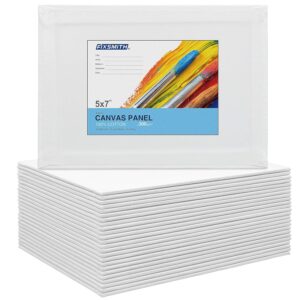
Wood Panels:
Painting on wood panels provides a distinctive surface with a smooth feel. It’s a popular choice among painters who want a hard and long-lasting surface. you avoid warping, make sure you prime the wood.
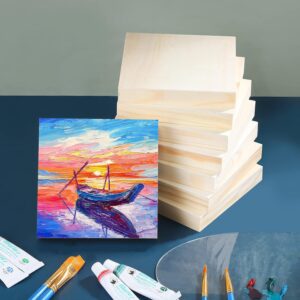
Canvas Paper:
A low-cost alternative to traditional canvases, canvas paper is ideal for practice sketches and studies. It comes in pads, making it ideal for outdoor or on-the-go painting.
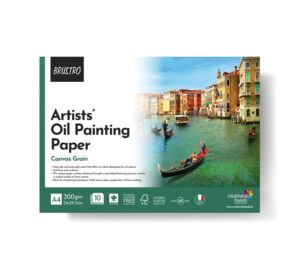
Keep in mind that the surface you use might have an impact on the preservation integrity of your artwork, so invest in high-quality materials. Experiment with several surfaces to see which one best suits your style and technique.
Conclusion:
Mastering the fundamentals of brushes, media, and surfaces in the broad world of oil painting is a never-ending path of research and self-discovery. As an artist with a decade of expertise, I encourage you to embrace the process of experimenting and discover what connects with your distinct artistic voice.
Invest in quality brushes that feel like an extension of your hand, experiment with different materials to expand your palette, and select surfaces that will elevate your artwork. Remember that the essence of your creativity rests in the careful balance between skill and expression as you negotiate the complexities of oil painting.
May the alchemy of mediums guide your brushes as they dance across your chosen surface, and may your artistic journey be a masterpiece in and of itself. Have fun drawing!
To learn more about art, visit SILPAVAT.IN

